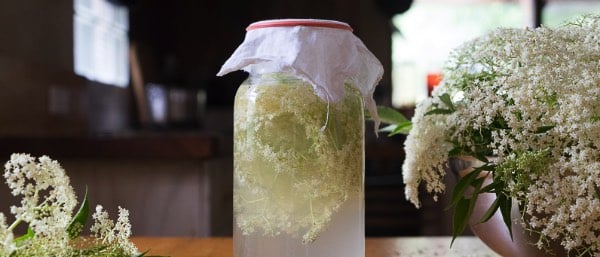
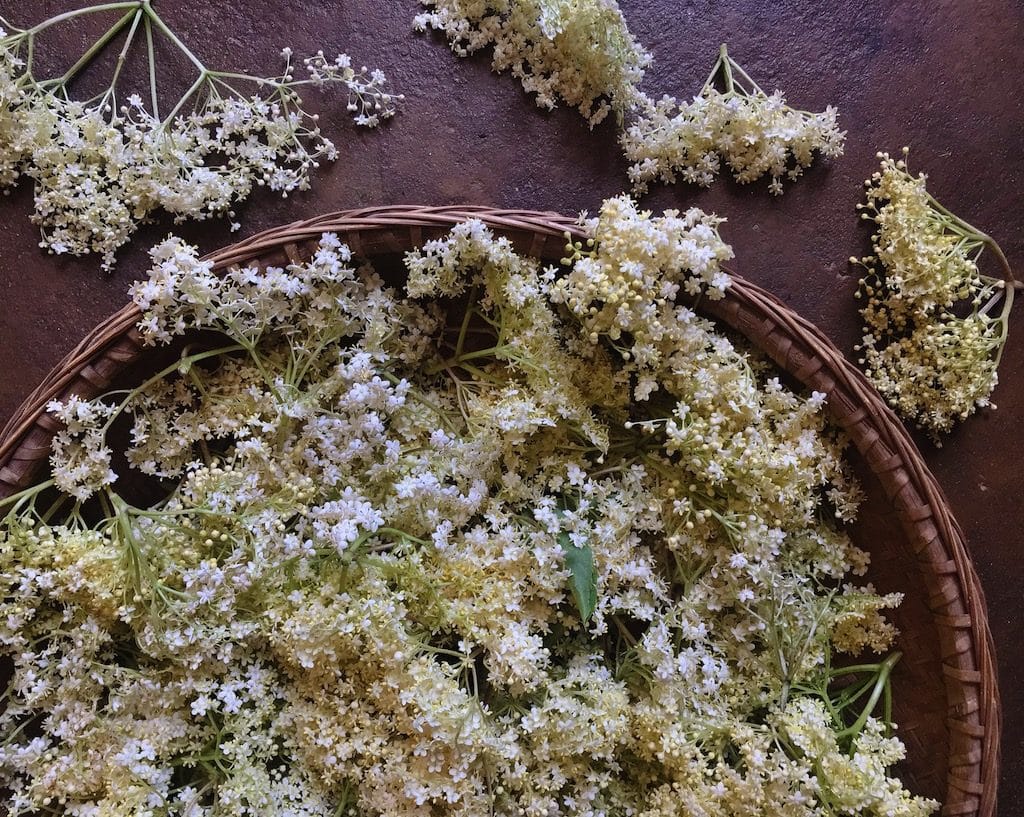
It’s elderflower season, finally! The gullies + back lanes around our town are awash with their splashes of lacy whiteness, and all the goodness they bring. Starting with wild elderflower soda, our family’s favourite. And there’s so many other uses, too.
But first, a little about the Elder
Native to most of Europe and north America, elder (Sambucus nigra) is a spindly stemmed, fast-growing deciduous shrub that flowers wildly in spring, followed by deep black clusters of berries. It requires fertile soils, but will grow in either wet or dry conditions. There are many other Sambucus species that are also known as elderberries, but Sambucus nigra is the one that is most commonly eaten and used for medicinal purposes.
The elder is an old medicinal and beloved plant that has naturalised far beyond its native lands. It is a powerful plant that should be approached with caution as some parts of it can be toxic, particularly its larger stems, leaves and unripe berries, as well as its bark. The elder flowers and ripe berries can be gathered safely, however, and have such a special taste and beneficial attributes that learning how to deal with this lovely weed is entirely worthwhile.
Elderflowers
Gather a big batch of the flowers in spring (right now!) and remove them from their larger stems, then proceed into elderflower everything. You can dry the elderflowers on paper or on a fine mesh rack, to use in drinks and herbal teas, and to sprinkle on salads and cakes.
Elderflowers also make an amazing cordial that is fantastic on a hot day, diluted with mineral water and served with fresh mint. You can never make too much of this!
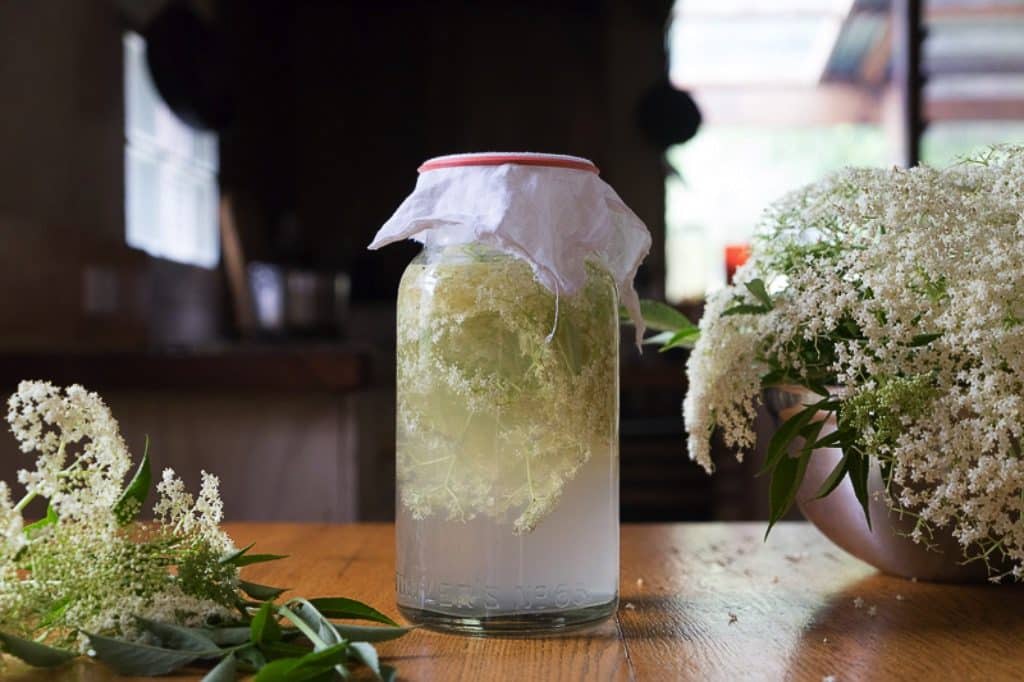
Wild Fermented Elderflower Soda
This is a spring recipe that we love. It’s family-friendly and entirely delicious as an afternoon treat. The fizz comes from whey and the copious yeasts in the elderflower pollen.
Because there is so much fermentation potential in this recipe in the form of pollen yeasts, it ferments very quickly, before all the sugars are consumed and the alcohol content rises. This means everyone can drink it, not just the big people in your household!
You will need:
- 2–3 elderflower floret heads
- 1.5 litres (6 cups) un-chlorinated water
- 2-3 heaped tablespoons of light, raw honey (the raw bit is important)
- 1 tablespoon whey – the clear liquid sitting on the top of plain yoghurt will do. (No whey? Use a tiny pinch of bread yeast instead)
Method:
1. Remove the large stems from the elderflower heads with scissors. Some people remove all the stems, but we don’t bother.
2. Fill a 2 litre (8 cup) jar three-quarters full with the water and add the honey, stirring to dissolve. Add the whey and then the elderflowers, stirring them all around.
3. Place the uncapped jar somewhere warm, where you will pass it multiple times a day. Lightly cover the top with a cloth to prevent critters getting in. Whenever you pass the jar, give it a stir to submerge the elderflowers – they will whirl around and then rise back to the top. Stir, stir, stir! This recipe is all about the stirring.
4. Within 2–6 days, depending on room temperature and the wild yeasts in the elderflower, the mixture will start to bubble. Taste it and see if it’s fizzy yet. If yes, ta da – you’ve made elderflower soda. If no, leave it a little longer. Once it’s done, strain off the solids.
5. Now you have a decision to make. You can bottle and chill the soda, which will have a very light fizz, or you can bottle it in swing-top glass bottles or plastic bottles and leave them on your kitchen bench to let the fizz build for a day or two.
The pressure will build up, so be careful when you open the bottles. When it’s as fizzy as you like it, chill the soda to halt fermentation and drink it within a day or so. Cheers.
And a note – some elderflower bushes that are cultivated and sold in garden centres are sterile (to prevent them bearing elderberries, and spreading weediness) – you can tell the sterile elderflower bushes by the fact that the flowers don’t smell strongly (due to a lack of pollen) – don’t use these elderflowers! The brew won’t taste good, and there’s no wild yeasts (do to the lack of pollen) to help it all along. Find some elderflowers w pollen, instead.
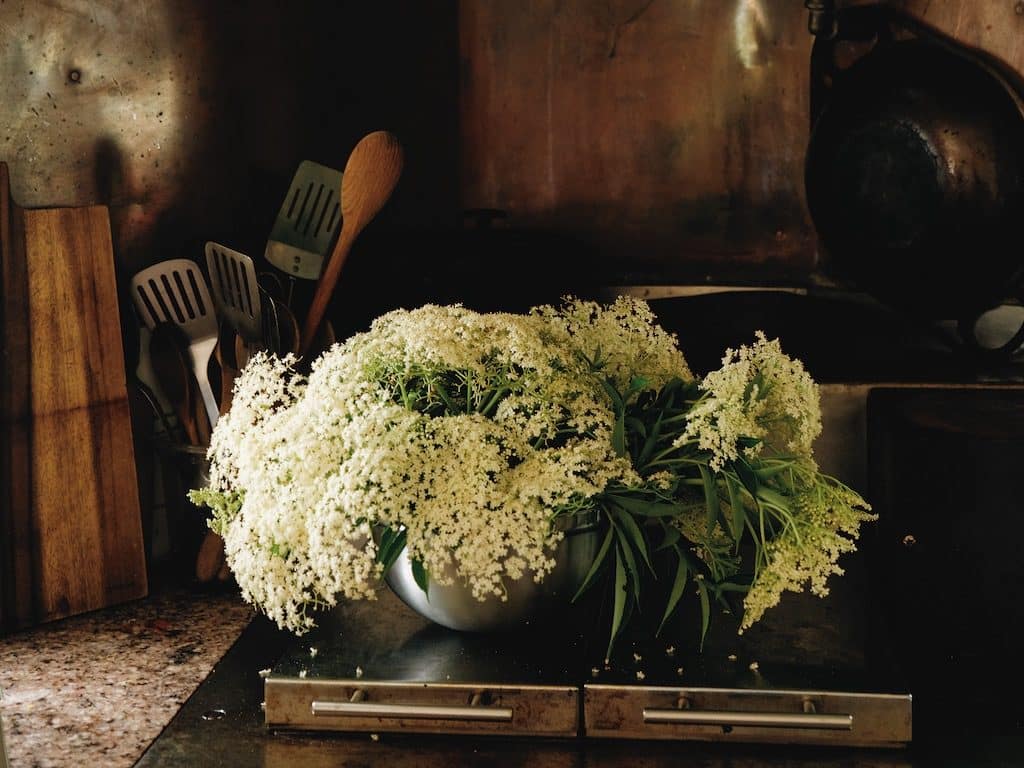
Tips…
The longer you leave the soda to ferment, the drier it will taste as the yeasts eat all the sugars. It will also become more fizzy, slightly alchoholic and potentially explosive when opened, so be careful.
We prefer to make this soda fresh in small batches, and drink it with a light fizz. If you’d like to add a little fresh mint or lemon balm at the bottling stage, go for it.
This basic recipe can be used to make all kinds of wild fermented fruit sodas. We’ve made blackberry, rhubarb, peach, nectarine, apple and more. You can also ‘backslop’ some liquid from one batch to the next to help get the fermentation started. There’s a whole world of sweet, fizzy DIY sodas to discover – experiment and enjoy.
If you can’t get hold of whey, a tiny pinch of champagne yeast or normal bakers’ yeast will have a similar effect. Or you can leave it out – the elderflowers and the honey will create their own ferment in time, it will just take a little longer and possibly be a bit more alcoholic.
The above is an extract from the Wild Food chapter of our new book Milkwood – real skills for down to earth living. You can buy a signed copy from us, or hit your local bookstore or library! Overseas folks, go here.
Other things to do with your elders…
- Make elderflower cordial (and whatever else Mark Diacono says to do with elderflowers)
- Make elderflower gin
- Make elderflower syrup
- Add them to your water kefir or kombucha blends
And, later in the season…
Enjoy, foragers and gardeners! What are you doing with your elderflowers this spring? We’d love to hear xx


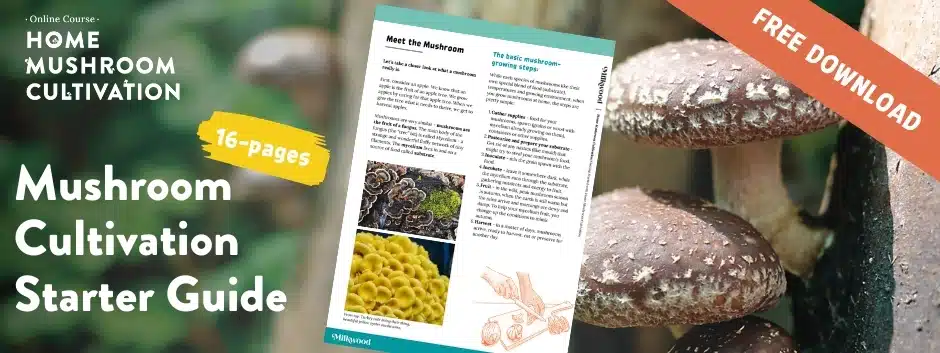
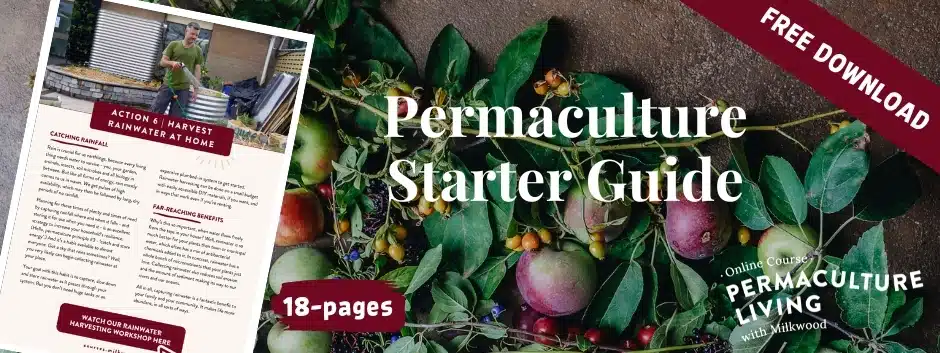

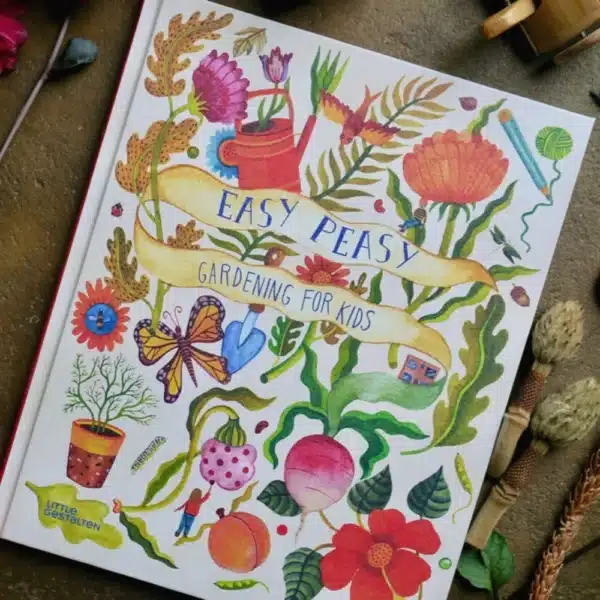
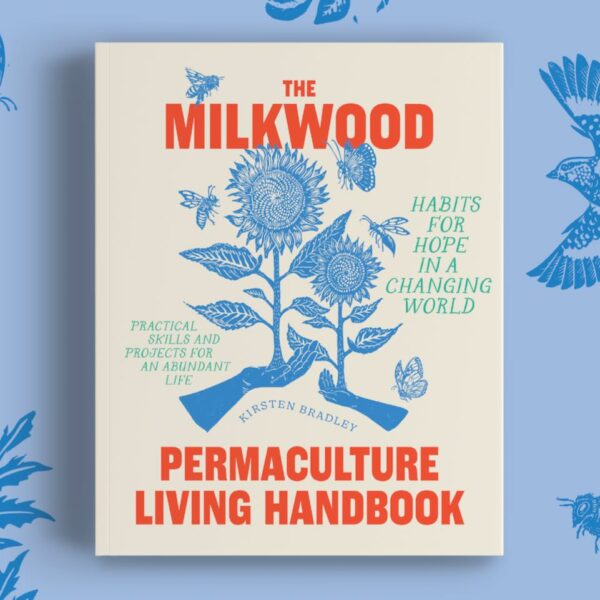
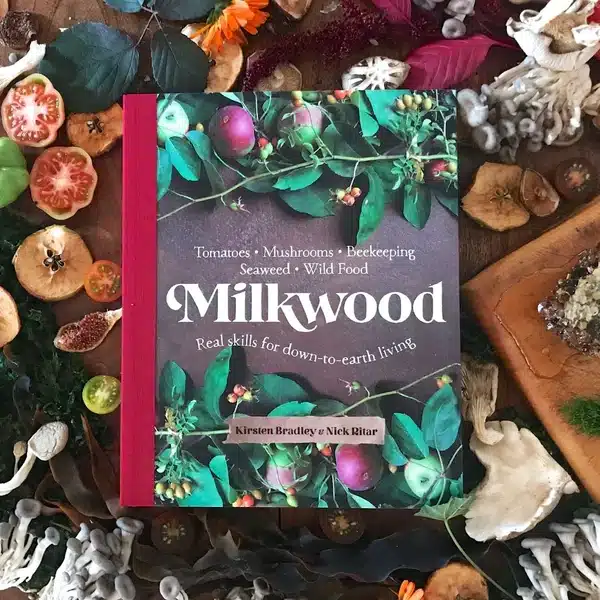






Do you think there is a difference between letting it sit covered and putting an airlock on it? Does it need allot of air for fermentation?
Heya, yep you can put an airlock on it instead, no worries at all – the fermentation is coming fromt he wild yeasts in the flowers, so that will be fine 🙂 – best of luck!
Hi, This is my second year attempting to make this soda and both times the flowers started to rot as oppossed to ferment and became a off smelling light brown colour. Would love your advice!
Ooh right – hmm – a few things to ask/try –
1. does your elderflower get berries? If not, it might be a sterile cultivar (to prevent spread) which will mean that the flowers dont have much/any pollen in them. The pollen is part of the activator for this soda. Sterile flowers won’t work as well / at all.
2. I would try increasing the amount of raw honey (maybe 3 tablespoons?), which will accelerate the fermentation and let it all get underway before the elderflowers have a chance to go funky…
good luck!
HI Kirsten. Thanks for this. YUm I will add lemon balm which I have in abundance.
Is the Whey Protein sold at health food stores ok to use for this recipe?
No, sorry, it’ won’t be suitable, bc you’re adding it for its good-bugs – use a little raw honey, instead?
I’ll have to try this as the flowers are starting to bud now. I have made the cordial and the champagne in the past and they can keep very well, unless someone gets a taste! I did the pickled mushrooms years ago and they were a great pantry staple. Keep these lovely ideas flowing please!
Sounds lovely … the flavour of elderberry is sooooo beautiful! Thank you for sharing!
my fave too 🙂
Would it work with other wild flowers, what about stinging nettles?
Heya Ivana – yes it will – worth experimenting! You might want to add extra flavourings, depending on the aroma of the flowers. We’ve used lilac, and it works brilliantly…